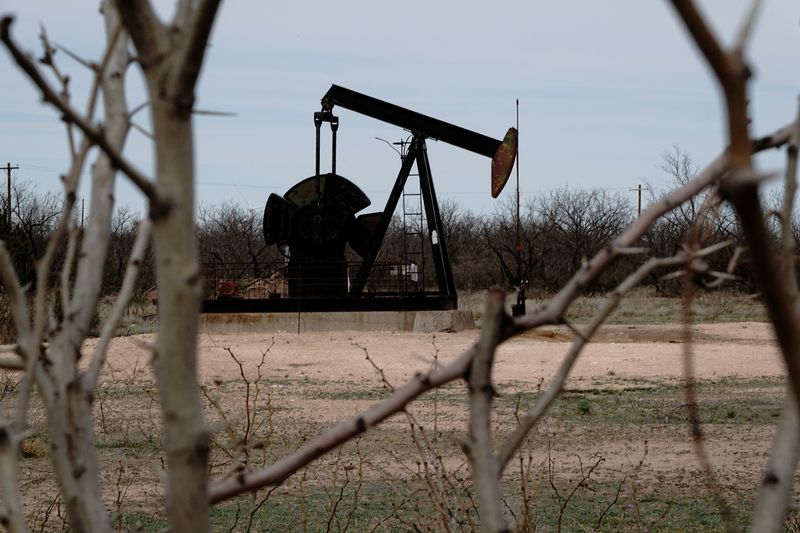Commodities
Oil ends week higher as investors take stock of Fed rate cuts

By Georgina McCartney
(Reuters) – Oil prices settled lower on Friday but recorded a second straight week of gains, garnering support from a U.S. interest rate cut and a dip in U.S. supply.
futures settled down 39 cents, or 0.52%, at $74.49 a barrel. U.S. WTI crude futures settled down 3 cents, or 0.4%, to $71.92.
Signs of a slowing economy in major commodity consumer China gave prices a ceiling. But for the week, both benchmarks settled up more than 4%.
Prices have recovered after Brent fell below $69 for the first time in nearly three years on Sept. 10.
“The market concluded that a sub-$70 level combined with hedge funds holding a record weak belief in higher prices of crude and fuel products would require a recession to be justified, a risk this week’s bumper U.S. rate cut helped reduce,” Ole Hansen, head of commodity strategy at Saxo Bank, said.
Prices rose more than 1% on Thursday, a day after the U.S. central bank’s decision to cut interest rates by half a percentage point.
Interest rate cuts typically boost economic activity and energy demand, but some analysts are worried about weakness in the U.S. labour market.
“U.S. interest rate cuts have supported risk sentiment, weakened the dollar and supported crude this week,” said Giovanni Staunovo, an analyst at UBS.
“However, it takes time until rate cuts support economic activity and oil demand growth,” he added.
The Fed projected a further 50 basis points of rate cuts by the end of this year, a full percentage point of cuts next year and a further half-percentage-point reduction in 2026.
“The Fed’s decision to cut interest rates and some hangover from Hurricane Francine are the only two things that are propping up the market up right now,” said Tim Snyder, chief economist at Matador Economics.
“The thought of another 50 to 75 basis points has markets hopeful for some degree of economic stability,” he added.
About 6% of crude production and 10% of output in the U.S. Gulf of Mexico were offline in the aftermath of Hurricane Francine, the U.S. Bureau of Safety and Environmental Enforcement said on Thursday in its final update on the storm.
Additional support for oil prices came from a decline in inventories to a one-year low last week. [EIA/S]
Rising tensions in the Middle East, raising the risk of supply disruption, further boosted the oil market. Israel announced on Friday it killed a top Hezbollah commander and other senior figures in the Lebanese movement in an airstrike on Beirut as fears of a wider war rise.
Still, U.S. President Joe Biden said reaching a Gaza ceasefire deal remains realistic, telling reporters: “We have to keep at it.”
In China, refinery output slowed for a fifth straight month in August and industrial output growth hit a five-month low.

China also issued its third and likely final batch of fuel export quotas for the year, keeping volume in line with 2023 levels. “This move indicates that refinery margins are too weak to justify increased activity,” StoneX Analyst Alex Hodes said in a note on Friday.
Meanwhile, oil refiners in Asia, Europe and the U.S. face a drop in profitability to multi-year lows.
Commodities
Oil prices rise; U.S. crude inventories plunge, Russia-Ukraine truce eyed
Commodities
India’s Reliance to stop buying Venezuelan oil over US tariffs, sources say
Commodities
Oil prices climb on Venezuela supply worries

 Forex3 years ago
Forex3 years agoForex Today: the dollar is gaining strength amid gloomy sentiment at the start of the Fed’s week

 Forex3 years ago
Forex3 years agoUnbiased review of Pocket Option broker

 Forex3 years ago
Forex3 years agoDollar to pound sterling exchange rate today: Pound plummeted to its lowest since 1985

 Forex3 years ago
Forex3 years agoHow is the Australian dollar doing today?

 Cryptocurrency3 years ago
Cryptocurrency3 years agoWhat happened in the crypto market – current events today

 World3 years ago
World3 years agoWhy are modern video games an art form?

 Commodities3 years ago
Commodities3 years agoCopper continues to fall in price on expectations of lower demand in China

 Economy3 years ago
Economy3 years agoCrude oil tankers double in price due to EU anti-Russian sanctions























